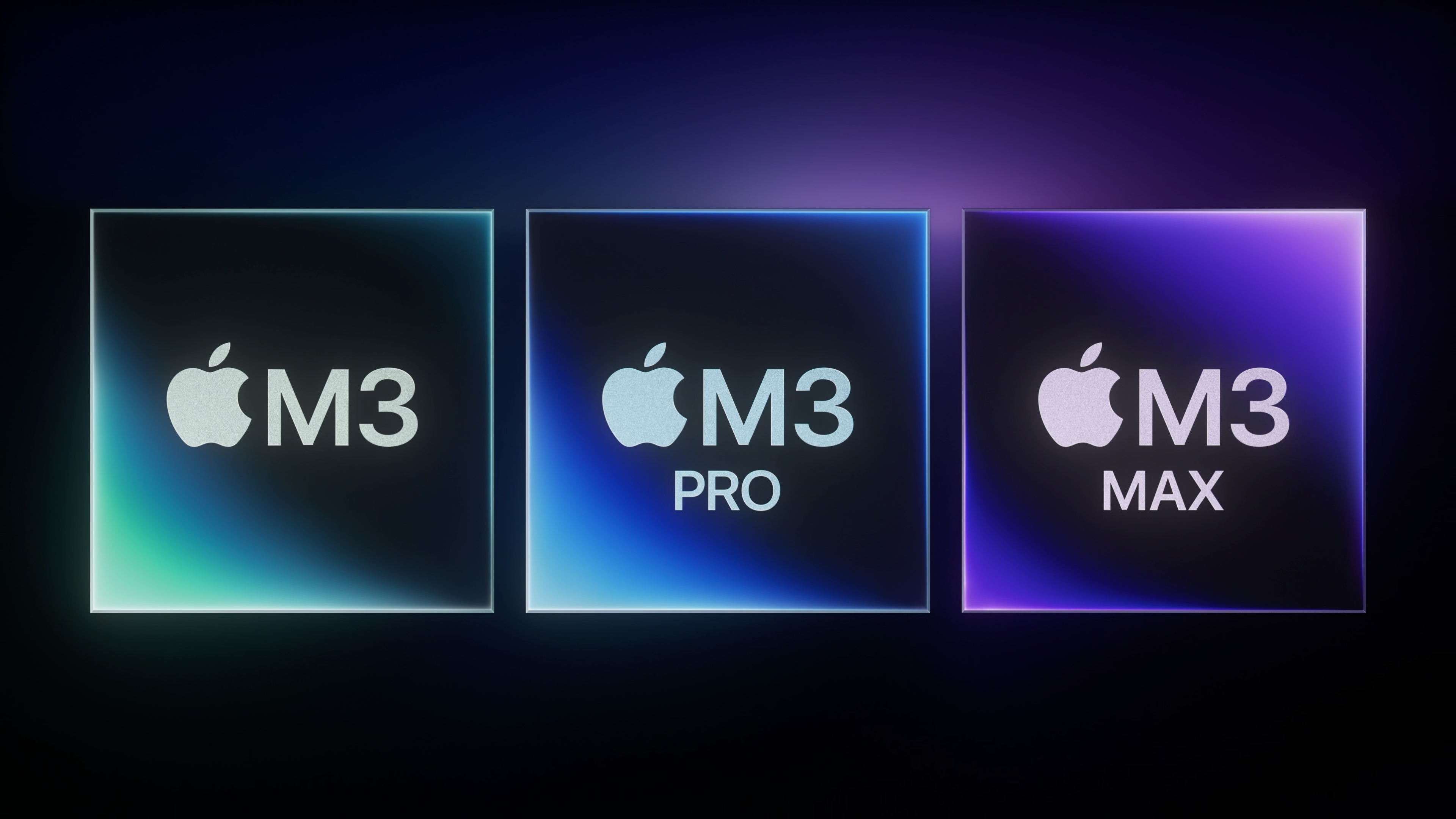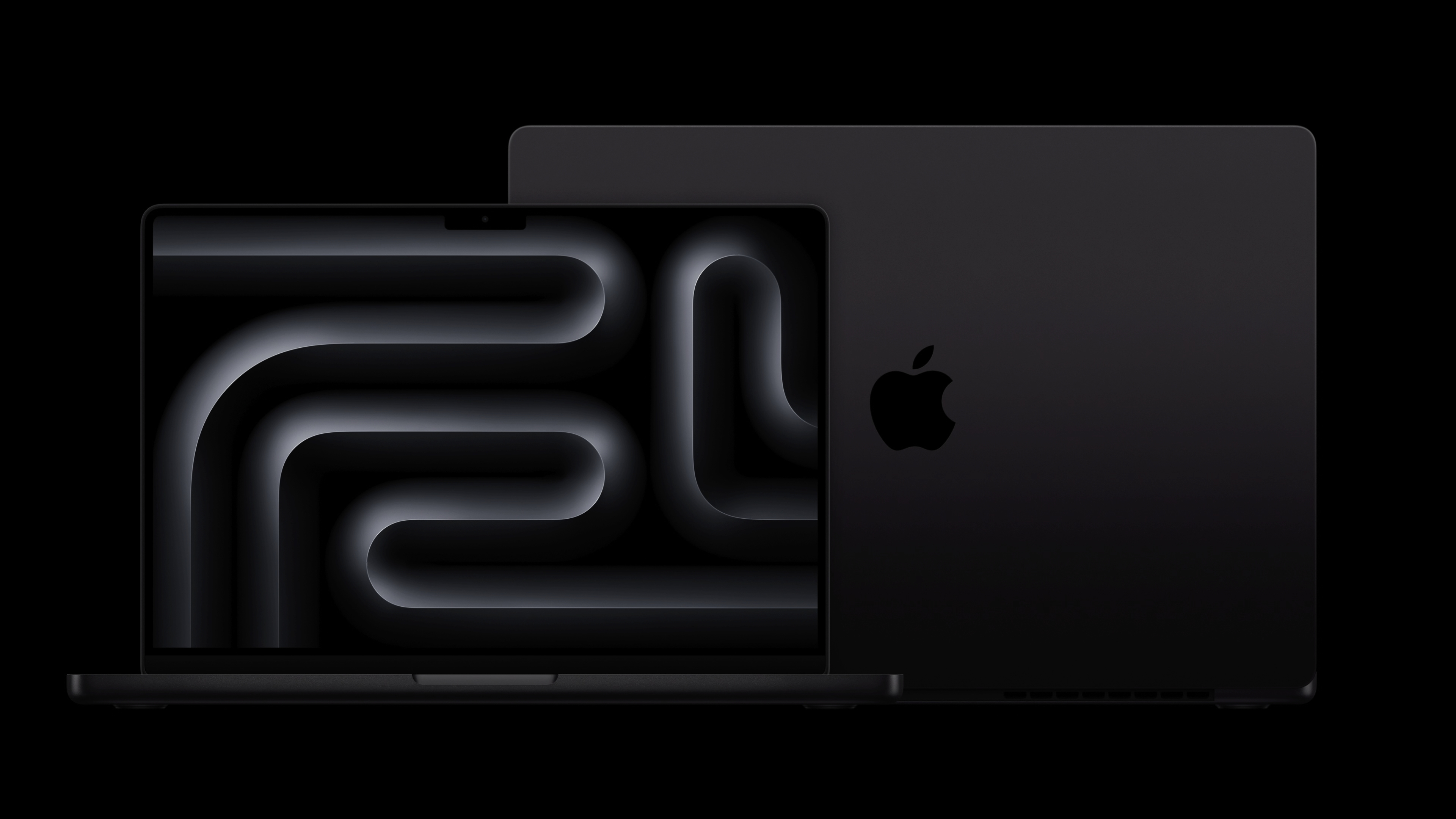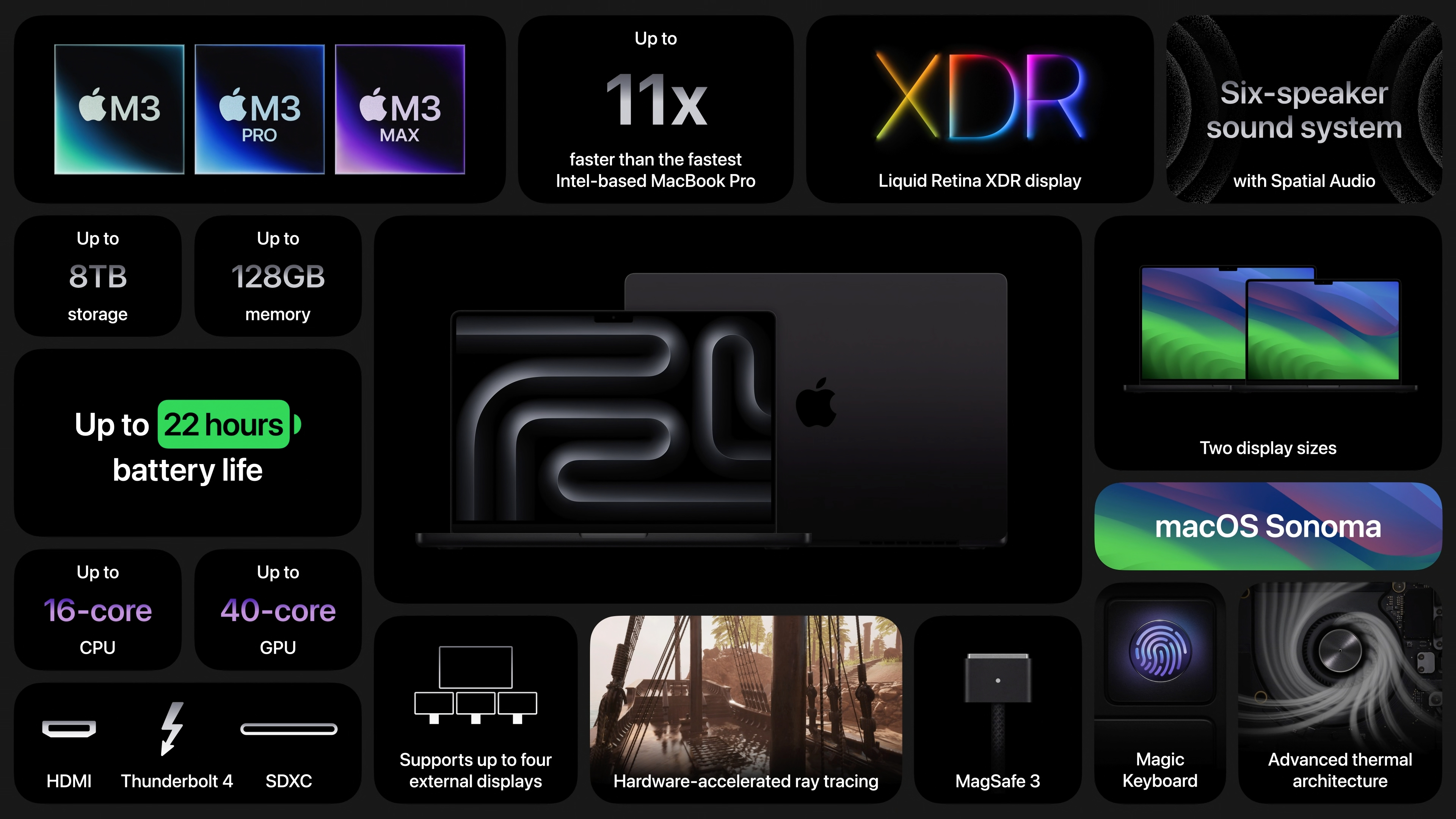Apple Debuts MacBook Pros with 3nm M3 Pro and M3 Max, New 24-inch iMac

Apple just held its "Scary Fast" October event, which was meant to invoke Halloween and introduce new products. The timing of the event, however, is uncharacteristic for Apple, with an 8pm start time instead of the usual 1pm for its keynotes. So, without further ado, let's see what spooky hardware Apple has in store as we come approach the closing months of 2023.
14 and 16-inch MacBook Pro with M3-based SoCs
The big news is the 3-nanometer M3 family of chips for the MacBook Pro: M3, M3 Pro, and M3 Max. They feature an all-new GPU architecture with hardware-accelerated mesh shading, hardware-accelerated ray tracing (as seen on the A17 Pro), and Dynamic Caching. Dynamic Memory, as its name implies, allows local memory to be dynamically allocated by hardware in real time depending on what an application needs. Apple claims up to a 2.5x uplift in performance compared to the GPU in the M2 family.

The performance cores are up to 30 percent faster, while the efficiency cores are up to 50 percent faster than the M2 Pro and M2 Pro Max. The neural engine is up to 60 percent faster than the one found in the M1 family. Here's the new CPU lineup for the MacBook Pros:
- M3 8-core CPU (4 performance, 3 efficiency), 10-core GPU, up to 24GB unified memory
- M3 Pro 12-core CPU (6 performance, 6 efficiency), 18-core GPU, up to 36 GB unified memory
- M3 Max 16-core CPU (12 performance, 4 efficiency), 40-core GPU, up to 128GB unified memory
Base 14-inch MacBook Pros come with the M3 processor, whereas previous entry-level 14-inch models started with the M1 Pro or M2 Pro. It will also be available with the M3 Pro and M3 Max. The 16-inch MacBook Pro will only be available in M3 Pro and M3 Max configurations.

Apple claims up to 22 hours of battery life with the new MacBook Pros. There’s also an upgraded Liquid Retina XDR Display with a maximum HDR brightness of 1600 nits.
In addition, Apple introduced a new color for the M3 Pro and M3 Max: Space Black. The dark aluminum finish is a nice break from the usual Silver and Space Grey that have been the standard two options for years on MacBook Pros. Apple claims it features a “breakthrough” anodization method that resists fingerprints.

The 14-inch MacBook Pro now starts at $1,599 with the M3 processor (it previously started at $1,999 with the M2 Pro), while the 16-inch MacBook Pro starts at $2,499. All the systems are available to order today, but MacBook Pros with the M3 Max won't ship until November.
Get Tom's Hardware's best news and in-depth reviews, straight to your inbox.
On a side note, the new lower price of the M3-based MacBook Pro will seemingly replace the "old" 13-inch MacBook Pro.
New 24-inch iMac with M3
It's been over two years since Apple last updated the iMac. At the time, the all-in-one computer launched with the M1 processor. When Apple debuted the M2 processor for the Mac mini and MacBook Air, the iMac was left out of the loop.

Now, finally, a new iMac is boasting increased performance with the M3 processor. The new 24-inch iMac Pro is now up to 2x faster than its predecessor with an M1 processor (Apple also says that the machine is 2.5x faster when compared to 27-inch Intel-based all-in-one machines). It will be available in seven colors and will still start at $1,299.
Apple says that the new 24-inch iMac is available to order today and will ship next week.

Brandon Hill is a senior editor at Tom's Hardware. He has written about PC and Mac tech since the late 1990s with bylines at AnandTech, DailyTech, and Hot Hardware. When he is not consuming copious amounts of tech news, he can be found enjoying the NC mountains or the beach with his wife and two sons.
-
thestryker The 30% and 50% faster claims are referring to the M3 vs M1 for M3 vs M2 they are 15%/30%. Apple added AV1 decoding. The memory configurations look different so I'm curious about bus width.Reply -
Murissokah Comparing performance to Intel based macs looks like an obvious attempt at pushing meaningless marketing numbers instead of discussing real improvements. From the presentation it seems like a incremental improvement, if you are in the market for a new mac now you'd probably want that, but I see no reason to upgrade from m1 or m2.Reply -
hotaru251 8GB ram on base model in 2023.....and people still think thats fine. Applefanbase are a lost cause e_eReply -
JamesJones44 Reply
I don't think so. As far as I'm aware these do not support SMT in any formezst036 said:Hyperthreading? -
artk2219 Reply
Correct, arm doesn't have anything with smt. SMT really only makes sense in an architecture like x86 where the cores can spend some time waiting around for data. There is less of that with arm so theres no reason for it, you just add more cores since they're relatively efficient. 128GB is still not much for a professional workload Apple, there are projects that will chew through that in a moment, they really need to find a way to allow users to add more RAM. I guess if you're coming from an M1 mac it looks like it may be a decent upgrade. If you're on an Intel Mac pro, I don't know that Apple is going to get you a decent replacement any time soon. You may want to consider moving platforms if you're looking for an upgrade on the mac pro, Linux has been up to wonderful things in the last few years if you can't make that hop to Windows.JamesJones44 said:I don't think so. As far as I'm aware these do not support SMT in any form -
JamesJones44 These configurations make me curious about two things when looking at the M2 and M2 Pro. Memory bandwidth and the loss of P core count on the M3 Pro.Reply
The memory bandwidth according to the tech specs page went down for every model except the high end M3 Max (the base M3 Max is 300 GB/s vs 400 GB/s on M2/M1 Max).
The P core count on the M3 Pro went down to 6 P cores max, the M1/M2 Pro could have 8 P cores. It does pick up 2 additional e cores.
These two things make me wonder if the top end M3 Pro really has better performance overall than the top end M2 Pro or if Apple's charts were comparing the top end M3 Pro (6 P core, 6 E core) to the bottom end M2 Pro (6 P core, 4 E core). I guess we will have to wait and see once people can bench these themselves. -
thestryker Reply
The standard M3 seems to still have 100GB/s memory bandwidth, but it is interesting to see that both M3 Pro SoCs have 150GB/s and the 300/400GB/s split on the M3 Max.JamesJones44 said:The memory bandwidth according to the tech specs page went down for every model except the high end M3 Max (the base M3 Max is 300 GB/s vs 400 GB/s on M2/M1 Max).
The hardware spec changes really make apple's already shady benchmarking practices look way worse.JamesJones44 said:These two things make me wonder if the top end M3 Pro really has better performance overall than the top end M2 Pro or if Apple's charts were comparing the top end M3 Pro (6 P core, 6 E core) to the bottom end M2 Pro (6 P core, 4 E core). I guess we will have to wait and see once people can bench these themselves.
The new M3 Pro having fewer transistors makes me wonder if the M2 Pro was the most common chip sold and this is more of a bottom line move than optimal design. I'm also a bit surprised they're still using LPDDR5 instead of LPDDR5X, but perhaps their memory controller doesn't play nice or the economics didn't work out.